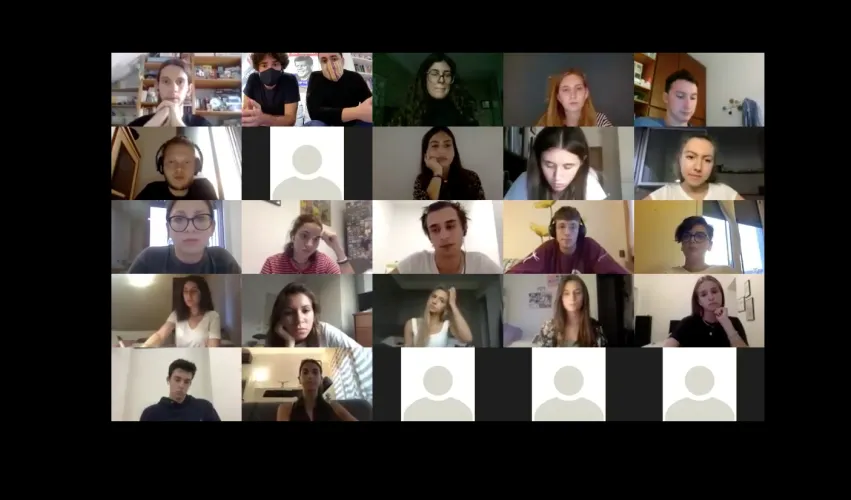
A Student Newsroom for Live Commentary on the US Presidential Elections
On the night of 3 November we should know who the 46th president of the United States of America will be. That night, following the voting marathon together with millions of other people around the globe will be the students of the Television & Culture module taught by Andrea Quartarone and his teaching assistant Ennio Terrasi Borghesan for the second part of the course Critical Approaches to the Arts (II), in Bocconi's undergraduate program in Management of Arts and Culture (CLEACC).
The television module explores the relationships between society TV and politics, and has a peculiarity: every US election year, the television portrayal of the American presidency becomes the focus for the entire program. Lectures focus on three historical events that changed the history of television: the first political debate ever aired on television (Kennedy and Nixon, 1960), the assassination of JFK in Dallas as the first televised disaster marathon (1963), and the 1977 TV interview by Nixon, where the former president admits he has responsibility for the Watergate scandal. Since history is best learned when you are living it, on a voluntary basis the module provides the possibility of following and commenting together marathons and debates taking place on election night: "In 2016, I had the idea of us ​​following together electoral events, an initiative that has been a great success". Professor Quartarone would have liked to repeat the experience this year, but Covid and the consequent need for social distancing have altered the situation.
However, the newsroom created by students, and modeled on a true political TV studio, has been kept alive, thanks to the collaboration with Radio Bocconi, so that students and professors were able to jointly follow and comment on the first TV confrontation between the two presidential candidates (here is the podcast of the first episode of the program, which has the evocative name of "Good Night and Good Luck!"). The next appointment, is for the election night (for all updates, follow the program's Twitter account @GNAGL2020).
"History often undergoes sudden accelerations, due to events that change the whole perspective of subsequent years, something we tend to realize only retrospectively", explains Andrea Quartarone speaking of his course. "At other times, however, events are immediately apparent as milestones in the historical timeline: such is the case with US presidential elections. This is the best way to assess the theories that discuss the relationship between TV and society at the very moment when history is made".
Of course, it is not easy to consider all the debates and comments made by US media, and above all critically examine all the campaigning that takes place when cameras are off. "However, it really turns you into protagonist of the election experience," says Sofia Rosti, a 19-year-old student of the English-language version of CLEACC, who takes part in the newsroom. "We are divided into six groups, I am part of the group that follows Biden's statements and activities, then there is the group following Trump, those who study the reactions in the American press, the group that looks at social media, and so on. At the beginning of the week, every team must decide the theme they will deal with in the next episode of the program and over the course of the week they prepare the program's lineup".
Lidia Schwartz, 19 and second-year student of CLEACC, underscores how this activity has completely changed her perspective: "Watching US elections in this way enables you to consider them from a completely different point of view," she explains. "I had always followed presidential campaigns and elections, but I had never informed myself so thoroughly on all the aspects of the electoral process. In the newsroom, we follow in real time reactions by newspapers and the general population, and we discuss them with our classmates".